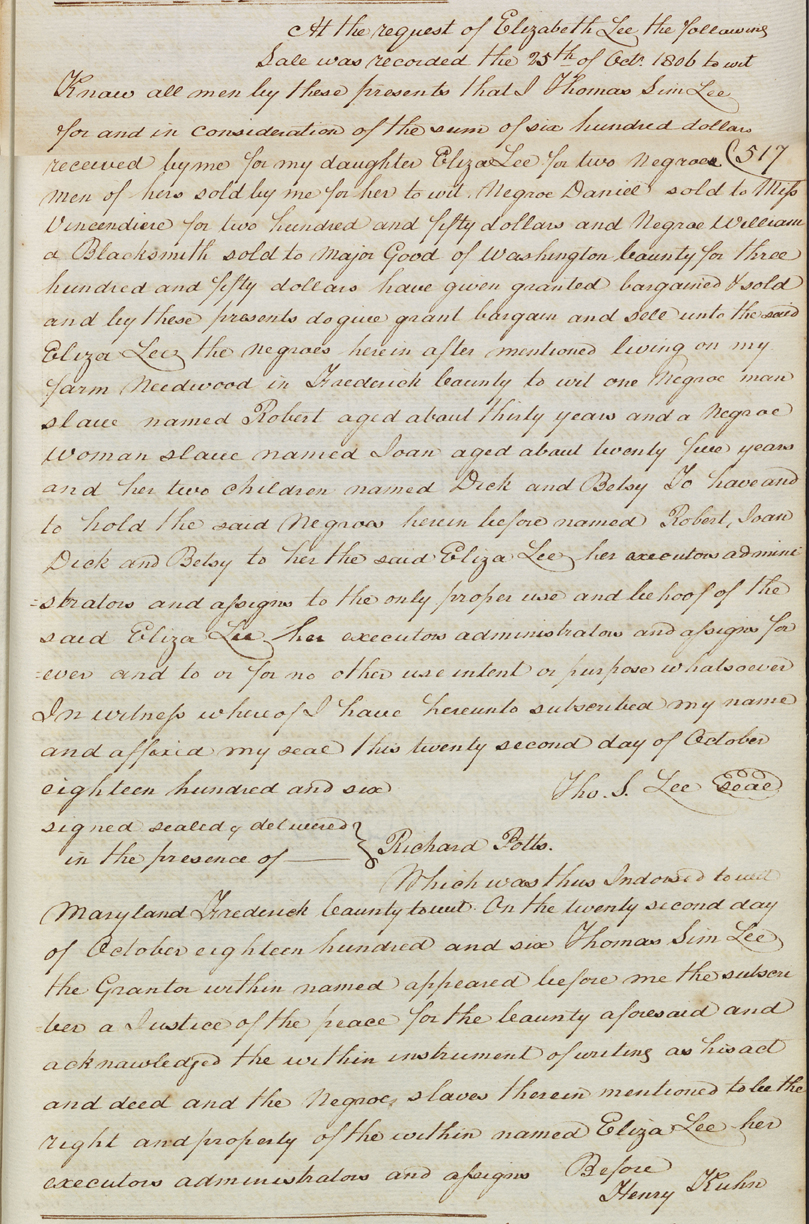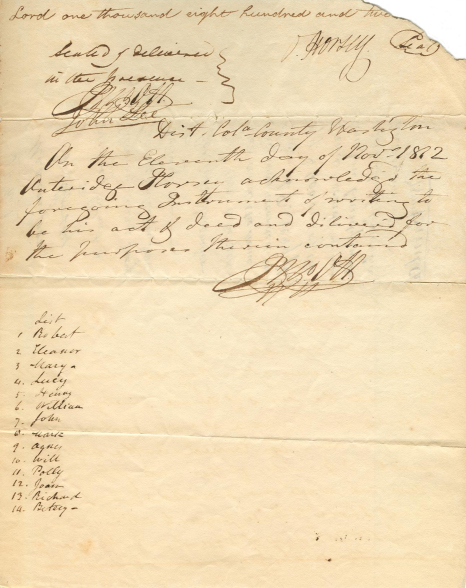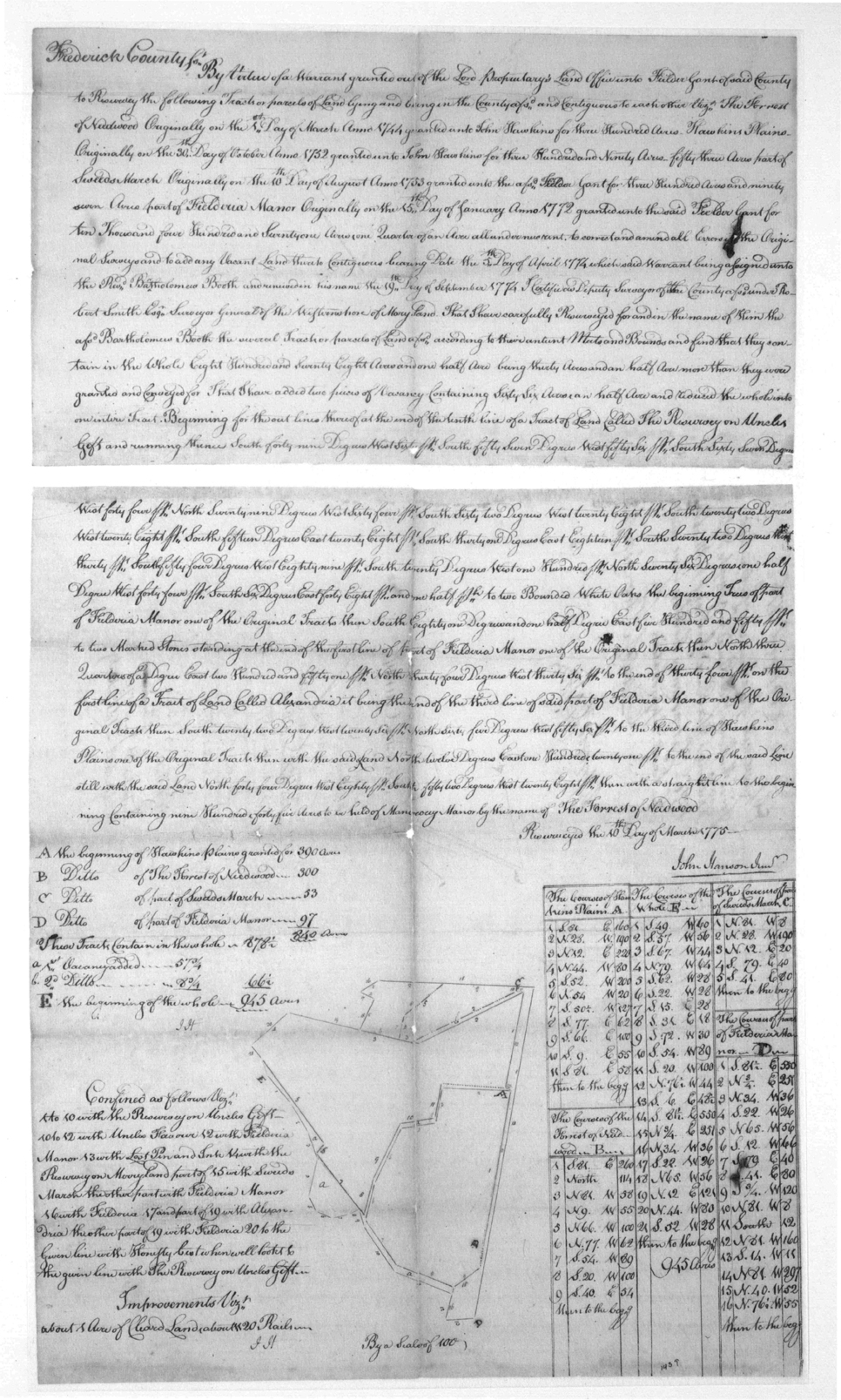Typical of most large plantations in Maryland, farming and other labor at Needwood was carried out by slaves. Slaveholding and manumission at the Needwood properties often crossed generations. In 1806, four slaves from Needwood, Robert, Joan, and her children, Dick and Betsy, were sold by Lee to his daughter, Elizabeth. Elizabeth brought these slaves, along with all her other property, into her marriage with Outerbridge Horsey, a state politician and United States Congressman from Delaware. Because Elizabeth owned no land and lived with her father prior to her marriage, it is likely that these slaves were her personal attendants.
On November 11, 1812, seven months after their marriage, Horsey filed
the deed of manumission seen below. It manumitted fourteen slaves,
among them Robert and his wife, Eleanor; Joan, her son, Richard, and her daughter,
Betsy.
 |
 |
 |
Click on images to enlarge
Left: Sale of four slaves from Thomas Sim Lee to Elizabeth
D. Lee, October 25, 1806, MSA C814
Center: Manumission of fourteen slaves by Outerbridge
Horsey, November 11, 1812, courtesy of Peter J. DePuydt
Right: Manumission of Nelly by Thomas Sim Lee, June
5, 1818, MSA C814

June 3, 1776
MSA S1197